#anna canzi
Explore tagged Tumblr posts
Text
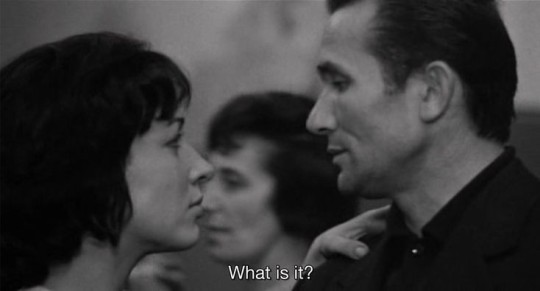
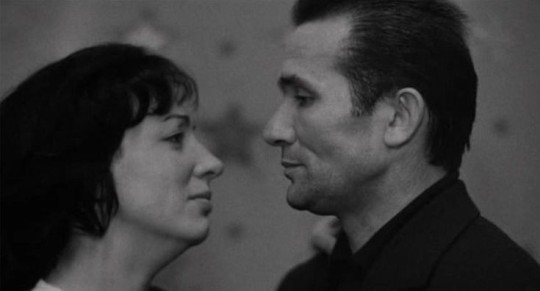
I Fidanzati (1963), Ermanno Olmi
#film#cinema#movies#photography#art#actors#cinematography#film photography#vintage#i fidanzati#ermanno olmi#anna canzi#carlo cabrini#60s#1960s#60s movies#1960s films#movie quotes#italian cinema
19 notes
·
View notes
Photo

Ermanno Olmi’s “I fidanzati” (The Fiancés) March 25, 1963 (Poster art by Tony Stella).
#Ermanno Olmi#I fidanzati#The Fiancés#1963#Sixties#Foreign#🇮🇹#Romantic Drama#Drama#Carlo Cabrini#Anna Canzi#4/5
2 notes
·
View notes
Photo
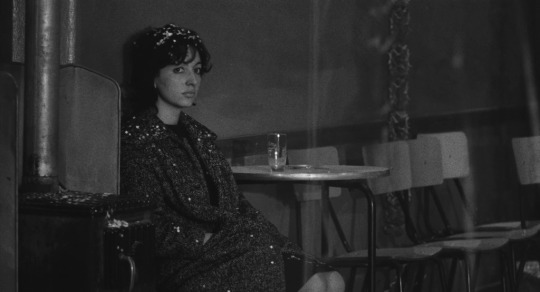
I Fidanzati (1963), Ermanno Olmi.
3 notes
·
View notes
Photo
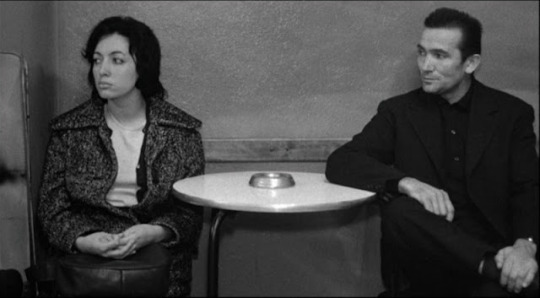
Anna Canzi and Carlo Cabrini in I Fidanzati (Ermanno Olmi, 1963) Cast: Anna Canzi, Carlo Cabrini. Screenplay: Ermanno Olmi. Cinematography: Lamberto Caimi. Art direction: Ettore Lombardi. Film editing: Carla Colombo. Music: Gianni Ferrio Ermanno Olmi's I Fidanzati begins with an empty room, a kind of stage if you will, on which the first act of his small romantic drama will be played out. It's a large room, apparently some kind of meeting hall, in which the chairs and tables have been pushed to the sides. People begin to enter, including two men who scatter wax on what will become a dance floor. A pianist and an accordionist take their places on a small stage in a corner, and the tables and chairs along the walls begin to be occupied by people, some couples, some single. They are ordinary looking people, plain and paunchy and many of them middle-aged, but Olmi manages to direct our attention to a younger couple who are somewhat better-looking than most of the others in the room: She's pretty in a fresh, unmade-up way; he's craggily handsome. They are Liliana (Anna Canzi) and Giovanni (Carlo Cabrini), the engaged couple of the film's title, but they're also oddly tense with each other, as if they've just had a quarrel. When the musicians strike up a banal foxtrot, people slowly, self-consciously take the floor, starting with a pair of elderly women. Liliana and Giovanni watch the dancers silently until he stands up and invites her to dance with him. She indicates her lack of interest, so he crosses the room and finds another woman to dance with. Liliana and Giovanni have been engaged for a long time, never having quite saved enough money from their jobs to get married and find a place of their own. They are at odds tonight because he has just been offered a job by his company that includes advancement and better pay, but the job is in Sicily, hundreds of miles to the south, and she can't go with him. I Fidanzati, in short, is about the incompatibility of love and work. It's also set in a crucial moment in Italian history, when the postwar industrial and economic boom has begun to transform people's lives. Olmi's film, then, might be compared to Rainer Werner Fassbinder's films set in the era of the German Wirtschaftswunder, when prosperity upended people's lives. Nothing so drastic happens to Giovanni as happens to Fassbinder's Ali in Ali: Fear Eats the Soul (1974), of course, but when he takes the job in Sicily Giovanni finds himself in much the same position as Ali: a stranger in a strange land, uprooted from all that's familiar, especially his long-term relationship with his fiancée. Fortunately, absence makes the heart grow fonder, and in separation Giovanni and Liliana find their relationship undergoing some kind of renewal. Olmi is not a sentimental sap, however, and he chooses to conclude his film with a thunderstorm that interrupts a telephone call between the fidanzati, which some interpret as a symbol of their ongoing differences. But sometimes a thunderstorm is just a thunderstorm, and what really matters in Olmi's film is the skill with which he establishes the two characters, the deep authenticity of the two hitherto unknown actors who play them, the artful use of flashbacks and narrative disjunctions to create a mood and tone, and a camera that seeks out the beauty amid banality.
3 notes
·
View notes
Photo



#I fidanzati#1963#Ermanno Olmi#Carlo Cabrini#Anna Canzi#cinema#movie#film#filmmaking#cinematic#cinematography#actor#actress#filmmaker#director
23 notes
·
View notes
Photo








I Fidanzati (1962, Ermanno Olmi)
45 notes
·
View notes
Photo

I fidanzati (Ermanno Olmi, 1962)
#i fidanzati#ermanno olmi#carlo cabrini#anna canzi#1962#cinema italiano#italian cinema#italian movies#italian film
1 note
·
View note
Photo

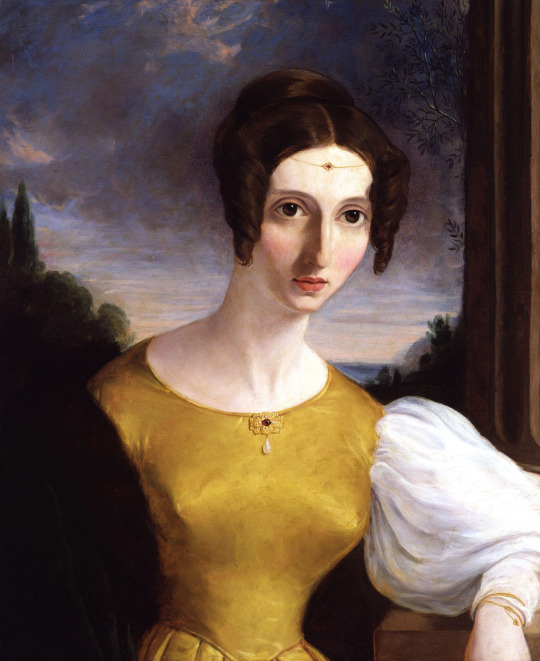

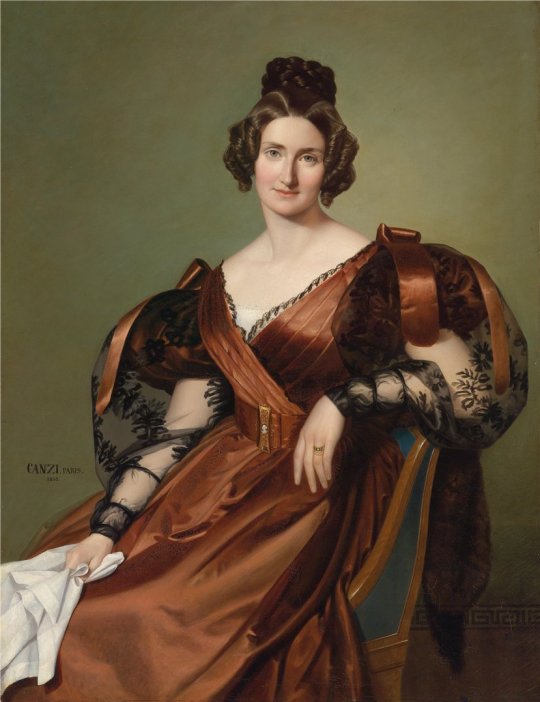
It’s the 1830s (from top to bottom) -
ca. 1832 La M. de la Corsets lithograph by ?. From tumblr.com/historical-fashion-devotee 1629X2048 @72 2.6Mj.
Harriet Mill by ? (National Portrait Gallery - London, UK). From Wikimedia 2400X2936 @72 2.2Mj.
1833-1834 Anna Maria Bischoff by Heinrich Beltz (private collection). From tumblr.com/baroque-beauty-24/700737029128044544/history-of-fashion-1833-1834-heinrich-henri; fixed flaws & spots w Pshop 2041X2575 @72 2Mj.
1835 Lady in an elegant dress by Auguste Alexis Canzi (auctioned by Dorotheum). From tumblr.com/historical-fashion-devotee 829X1077 @72 175kj.
#1830s fashion#Romantic era fashion#Biedermeier fashion#corsets#knotted coiffure#Harriet Mill#scoop neckline#V waistline#Gigot sleeves#Anna Maria Bischoff#Heinrich Beltz#hat feathers#fur-trimmed coat#pleated bertha#natural waistline#Auguste Alexis Canzi#chemise#V décolletage#belt#full skirt#lace over-sleeves
15 notes
·
View notes
Text

E TRASCORSA UNA SETTIMANA DALLA CONCLUSIONE DELLA MIA PERSONALE AL “MUSEO DELLA FESTA DELL’UVA “ A IMPRUNETA E IL MOMENTO DI RINGRAZIARE TUTTI COLORO CHE MI HANNO AIUTATO E SOSTENUTO CON LORO PRESENZA Riccardo Lazzerini, Tullio Del Bravo e tutto il consiglio direttivo del museo, Tina Pelaia Baroncini, Alessandro Sarti, Giuseppe Ciccia, Giusy Ciccia, Pino Marcosano, Susi La rosa, Ugo Barlozzetti, Fabrizio Borghini, Marco Baroncini, Marta Borgioli, Cristina Falcini, Stefano Graziani, Mauro Boninsegi, Lauretta Torsoli, Elisabetta Corti, Loretta Camilloni, Giusy Gramigni, Maurizio Biagi, Lucia Raveggi, Andrea Nappini, Danilo Forgeschi, Simonetta Fontani e Roberto, Diana Polo, Roberto Catelani, Anna Casu, Riccardo Baroncini e compagna, Carlo Tesori, Enzo Meli e Romana, Sabrina Valentini e Leonardo, Emanuela Degan e Lorenzo, Romano Sisto, Anna Bini, Carlo Rizzo, Filomena Marcusano, Silvia Mecheri, Rossana Rossi, Barbara Canzi, Graziano Cicogni, Emanuele Andrulli, Katrin Costanza e Daniele, Nadia Baroncini, Alessandro Stecchi, Adriano Bolognesi, Franca Parigi, Fiorella Noci, Paolo Luzzi, Barbara Parrini, Andrea Rufini, inoltre ringrazio tutti gli abitanti di IMPRUNETA che sono venuti a trovarmi in questi 2 mesi di grande soddisfazione. Ringrazio tutti coloro che mi hanno seguito su i social…. Che sono veramente tanti….se ho dimenticato qualcuno non me ne voglia non era mia intenzione e mi scuso.
0 notes
Text
How Ermanno Olmi Found Grace in the Daily Labors of Italians
Ermanno Olmi’s first fictional feature, “Il Posto,” shown at the Venice Film Festival in 1961, was released in the United States two years later with the incongruously noisy title “The Sound of Trumpets.” That name doesn’t entirely come out of nowhere; it echoes a phrase uttered by the mother of the main character, Domenico Cantoni, a young man starting out at the very bottom of a large Milanese firm and hoping to rise to the lower middle. If he stays up too late reading, she warns him, not even trumpets will wake him in time to get to his job.
In Italian, “Il Posto” more or less means “The Job,” but the faint biblical echo (of Jericho, of Judgment Day) in the English version isn’t entirely out of place, even though the film itself is notably quiet and gentle. If there is drudgery in store for Domenico, there is also music and subtle but striking intimations of divine grace.
Olmi, who died last year at 86, was drawn to the contemplation of work, to the rituals and routines of mid-20th-century clerks and welders, late-19th-century tenant farmers and early-16th-century soldiers. The marvelous retrospective that starts Friday at Film at Lincoln Center reveals a career and a sensibility at once wide-ranging and consistent. Olmi’s movies can be lyrical and impishly funny, passionate and scholarly, observant and impassioned. He had a documentary photographer’s eye for the specific and a painterly sense of composition. He retold Bible stories and directed literary adaptations.
The closest thing he made to an action movie, about Giovanni de’ Medici, who served the pope in the Italian Wars of the early 16th century, is called “The Profession of Arms,” and its depiction of early modern warfare includes a lot of meetings and paperwork. (A new digital restoration of this rigorous and ravishing film, shown at Cannes in 2001 and never released here, is a highlight of the 20-title Lincoln Center program.)
What links de’ Medici’s cavalry campaigns with Domenico’s desk-jockeying isn’t only the drudgery and occasional absurdity of the work, nor the often inscrutable nature of the cause it serves. (What does this enormous, highly regimented company actually do? Why is the pope at war with the German emperor? Such questions are above our heroes’ mortal pay grade, and our own).
Domenico, the oldest son of a small-town, working-class family who barely looks old enough to shave, is wary and diffident, equally flummoxed and fascinated by the ways of the adult, urban world. De’ Medici, the scion of an aristocratic line, is charismatic and decisive, a figure of legend among his contemporaries even before his death, at just 28, from a battlefield wound. Both men are oppressed by their responsibilities, and also brought alive by their devotion to duty. It’s not so much the labor itself. De’ Medici slogs through mud and snow in pursuit of his enemies. Domenico aspires to ascend from assistant messenger to junior pencil pusher. No, it’s the way submission to the work’s demands becomes a kind of spiritual discipline.
Olmi turned the prose of toil into poetry. If he is often, and correctly, classified as a next-generation neorealist — partial to nonprofessional actors, documentary techniques and everyday settings — his was a realism especially attentive to the ecstatic dimensions of quotidian experience. Formal religion is part of that experience, and so is politics. These are Italian movies, after all, directed by a man who came of age in the postwar ideological crucible defined by the Communist Party and the Catholic Church. Those institutions didn’t just influence Italians’ voting habits and social mores in the decades between Mussolini and Berlusconi; Marxism and Catholicism were cultural and aesthetic forces as well, integral to the language of Italian cinema in its boom years.
“Il Posto” is a product of that boom, and a landmark of 1960s cinema, latent with the rebellious impatience and irreverent energy that would ripple across every continent. Like the protagonists of “Billy Liar” and “The Graduate,” Domenico, played by the wide-eyed nonprofessional Sandro Panseri, seems imprisoned by a set of social expectations enforced by parents, bosses and the very architecture of his world. The first part of the film follows him through recruitment and what we would now call onboarding. Along with other candidates, he takes a written and physical examination, and then makes his way through a Kafkaesque series of corridors and waiting rooms.
But he is not just a rat in a maze. “Il Posto” is less a study in misery than an examination of a soul’s progress across a plane of existence that combines elements of inferno, purgatory and paradise. Domenico buys a new raincoat. He also meets a young woman named Antonietta (Loredana Detto, Olmi’s future wife), who is part of his entry-level cohort. On the day of the tests, they take advantage of the long lunch break that is a pillar of Italian civilization to drink espresso at a busy coffee bar and wander in a park. They are scolded for running on the grass, a singular moment of transgression in a film marked by good behavior.
Like the peasants in “The Tree of Wooden Clogs,” Olmi’s 1978 masterpiece, which won the Palme d’Or at Cannes, Domenico and Antonietta find pleasure and even something like freedom within their highly constrained circumstances. “Wooden Clogs,” populated by real-life farmers and agricultural laborers rather than actors, has been accused of taking a nostalgic view of the cruelties of feudalism. Its stately pace and sensual images — it’s set in Olmi’s native region of Bergamo in northern Italy — do impart a sense of beauty, and there is a conservative aspect to Olmi’s evocation of family ties and rural folkways.
But there is also a palpable sense of injustice and strong currents of political disaffection. Power in the countryside and in the industrial city is organized in such a way as to undermine the dignity, curtail the pleasure and constrict the freedom of workers. Political action is one response to this situation, but Olmi’s Christian humanism, while hardly apolitical, points him in a different direction, toward the ineradicable dignity of the individual and the startling beauty of creation.
“Il Posto’s” Domenico intuits this, and the magic of Olmi’s realism is that we do, too, and don’t despair for the young man’s prospects. The movie generated a sequel of sorts, a short feature called “The Fiancés” that I saw for the first time at Lincoln Center and that hit me with the force of a revelation. “Il Posto” ends at a company holiday party, with dancing and forced but genuine merriment. Its successor begins with a similar scene, at a blue-collar dance hall where Giovanni, a metal worker, has gone on a date with his girlfriend, Liliana.
They are older than Antonietta and Domenico, and wearier — of their lives and maybe of each other. Work is both their trial and their salvation. Giovanni (Carlo Cabrini) has a chance to help build a new factory in Sicily, an opportunity that offers a boost in income and status at the cost of months of separation from Liliana (Anna Canzi). He finds loneliness, local color, alienation and intermittent satisfaction — an array of unspectacular modern experiences that Olmi renders with an intensity that never feels overstated.
What keeps you engaged isn’t a plot so much as an intellectually and emotionally awakened sense of what it is to be alive. The film reveals itself, in the end, to be a love story of a conventional and also a miraculous kind. It’s the tale of a working man in love, and it’s the testament of a man who loves his work.
“Ermanno Olmi” begins Friday at Film at Lincoln Center. For more information, go to filmlinc.org.
Sahred From Source link Arts
from WordPress http://bit.ly/2R8Hbe6 via IFTTT
0 notes
Photo

Film du Jour: I Fidanzati - 1963 - Ermanno Olmi
2 notes
·
View notes
Photo








I fidanzati (The Fiances) , Ermanno Olmi , 1963.
47 notes
·
View notes
Photo



I fidanzati (The Fiances) , Ermanno Olmi , 1963.
1K notes
·
View notes
Photo



I fidanzati (The Fiances) , Ermanno Olmi , 1963.
42 notes
·
View notes
Photo



I fidanzati (The Fiances) , Ermanno Olmi , 1963.
16 notes
·
View notes
Photo


I fidanzati (The Fiances) , Ermanno Olmi , 1963.
36 notes
·
View notes